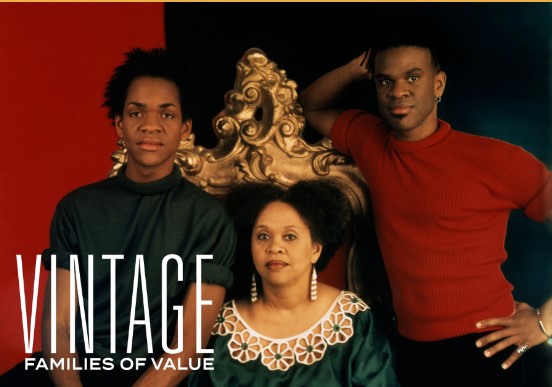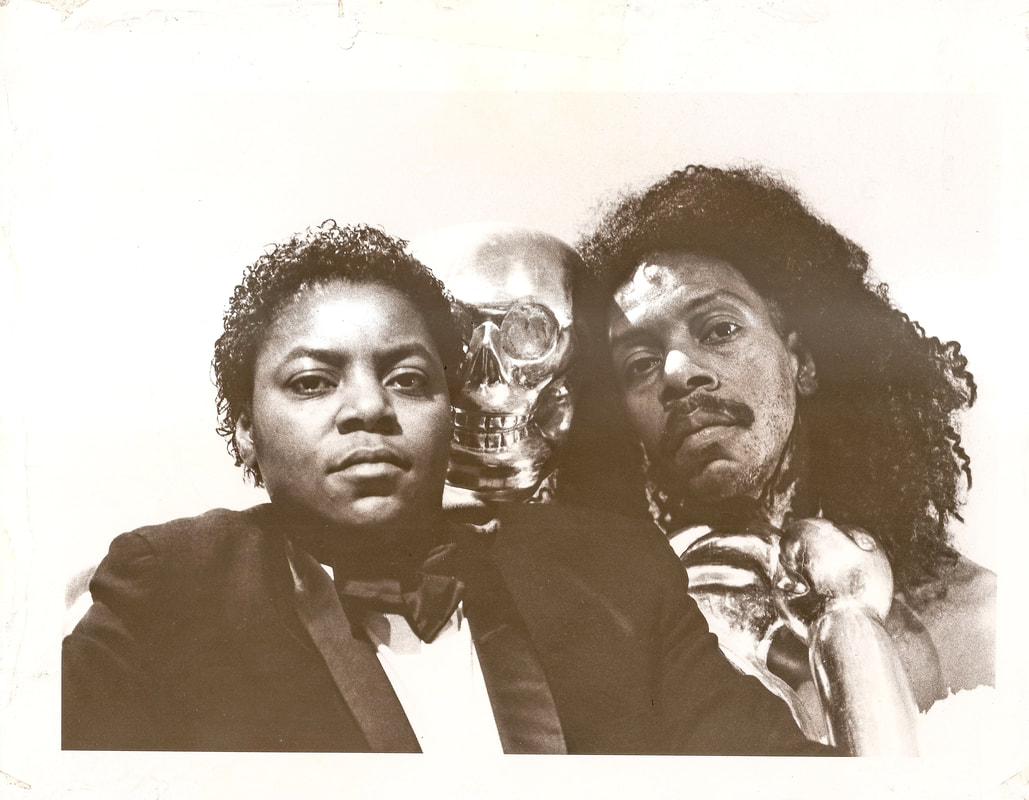Your source for Arts & Entertainment content, as well as fabulous human-interest stories, from Baltimore and beyond!
|
By Frankie Kujawa Maya Angelou once said, “I don’t believe an accident of birth makes people sisters or brothers. It makes them siblings. It gives them mutuality of parentage. Sisterhood and brotherhood are conditions people have to work at. It’s a serious matter.” In VINTAGE: Families of Value (1995), director and filmmaker Thomas Allen Harris explores this topic. Revry, the first global queer streaming network, recently announced a new partnership with Comcast Xfinity’s Beltway Region to introduce The Beltway Pride Screening Series – a collection of six compelling films that explore life through the lens of the LGBTQ community. A new film will be showcased each month through October. VINTAGE: Families of Value is the first being showcased as part of this series. Along with a virtual screening of the film, a panel discussion with the cast and filmmaker will be held on Thursday, July 30 from 8-8:45 p.m. EDT/5-5:45 p.m. PDT. Filmmaker Thomas Allen Harris and other cast members will join Pride Center of Maryland’s LaKesha M. Davis to discuss this groundbreaking documentary, which was partially filmed in Baltimore. The film is an impressionistic documentary which intimately explores three African American families through the eyes of lesbian and gay male siblings – two or more in the same family. The film is a thoughtful, and sometimes painful, examination that weaves together stories from all three families with scenes that express what some are unwilling to say. “This film is like a mosaic, or a family film, seen through the eyes of gay siblings,” began filmmaker Thomas Allen Harris. “I had given the families video cameras to interview one another over the course of 5 years.” Harris explained that the idea began as a way to document both he and his brother’s relationship as gay siblings. “My brother and I were both artists and we were both out. So, in some ways, we had changed our family dynamics. Once we both were out, it wasn’t like we had to leave the family to be who we were. The family, to a certain degree, adapted to us.” It was through their artistic talents that both the New York-native Harris and his brother, Lyle Ashton Harris, planted the seeds that would blossom into this film. “We were invested in our family. We were also both artists. It was during this time that it was the height of AIDS activism. At the same time, our parents were involved in the Anti-Apartheid movement because my stepdad was South African. So, my brother and I were interviewing one another when a critical thing happened to my brother. He tested HIV-positive. We then started interviewing each other back and forth. At the time, we didn’t know if it was a death sentence or not. Today, he’s still healthy and alive, and doing very well as an internationally recognized artist.” It was during these back-and-forth interviews that Harris had an idea. “I was thinking, ‘Well, I wonder if other families that have two or more gay siblings had a similar kind of dynamic.’ Or, ‘I wonder what their dynamic may have been like – did being gay change their family’s dynamic?’ So, I went looking for two other families; a male/female pair, and three sisters. After interviewing about 60 different people I realized that people I had already known had LGBT siblings, as well. I ended up working with them and beginning this kind of journey together.” Along with three sisters - Adrian, Anita and Anni - Harris also included brother and sister, Paul and Vanessa Eaddy. Both Paul and Vanessa grew up in Baltimore. The oldest of 8 children, Paul moved with his family to Baltimore when he was 4 years-old, before his sister Vanessa’s birth. “I was born in South Carolina, but we migrated to Baltimore in the mid-1950’s, before I started Kindergarten.” After studying art at Morgan State University, Paul went on to study ballet at the Peabody Conservatory. “I had a good base growing up in Baltimore. It was a great base in terms of art, music and theatre. Something was always playing in Druid Hill Park. I always lived around that park; so, I used to play tennis, swim and camp in that park.” Looking back on the film, Paul was proud of the dancing and choreography he added to the film. “Thomas [Allen Harris] was cool enough to allow me to share and be very open with my work in terms of dancing and staging.” Thomas chimed in, “Paul was a dancer and choreographer before. So, part of his and Vanessa’s scenes he had choreographed. And it helped give that rhythm and feel to the film.” Paul also reflected on his vulnerability in the film. “Just being open with your family, which took me a while to get there, made me real proud. Just being open about your sexuality and who and what you are with your family.” For Vanessa Eaddy, she felt that her relationship with her brother was strengthened by participating in the film. Prior to the film, Paul was living in New York, and Vanessa and he weren’t calling each other much. “I felt great doing the film with Paul because I felt a connection with him that I didn’t feel before. So, I felt that through the film that we actually got closer. Paul and I have had our ups and downs in the past. [In my opinion,] Paul was always the bossier one in the family, and he always saw me as his little sister. Through the years, though, he and I have done much better. Before the film, he had always wanted me to be a certain kind of butch. Over time, though, I really haven’t changed that much. I think he’s accepted me more now than he did then. Doing the film with him, I think, really brought us a little closer.” “What makes me proud,” Vanessa continued, “is the fact that maybe other gay siblings get a chance to see this film and they would get something out if it. And if they are having any problems, like maybe the sisters had, or like me and Paul, maybe they would get something out of it. Maybe they can relate to each other a little better. Maybe they can be a little more open and get something out of it. I was really proud for being part of it, mainly for the gay community. So other gay people, and straight people, can see it and see what it’s like being a gay sibling. I think there are a lot of straight people that really don’t have a clue about gay people, period. Let alone trying to imagine what it’s like for siblings to be gay in one family!” Upon reflecting on his film, Harris added, “What makes me most proud is that it’s a film that the cast all loved, and it’s a film that has helped them in terms of their relationships. I wasn’t interested in creating this competitive type of narrative of, ‘Which one is the good sibling, and which one was the bad sibling.’ I was very much aware that each of us has a complicated relationship. And, sibling relationships are really complicated.” Harris laughed, “In fact, my brother and I went to therapy in the middle of the film. I don’t think the film would have been made if we hadn’t taken that step. Which I recommend for all siblings.” “I think that this [film] actually holds up across the test of time.” Harris continued, “I wanted to make a work of art rather than just explain things to audiences. I wanted to give people the impression and idea of families through queer eyes. Not from the perspective of ‘Oh, there’s something wrong with us’ or ‘We want to be accepted.’ But from the perspective of, ‘We are standing in our power because we have two or more siblings. We have some numbers behind us.’ I made a film that actually has broken ground in terms of its storytelling. It’s informed by myth and poetry and that made it stand the test of time. So, I’m really proud about that.” Harris also reflected on why this is such an important film currently, not only for the LGBTQ community, but for communities of color, as well. “Well, right now LGBT people are still being marginalized. Historical figures like Bayard Rustin, who influenced the Civil Rights movement in the 1950’s, 1960’s and beyond. Pauli Murray, who was a lesbian activist and minister who has been completely taken out of history. Or even like my grandmother’s first cousin who was a trans person and was murdered. I didn’t even know that she existed until I came out and my aunt told me her.” “I think just for us to say ‘we are here’ is so powerful because we are here. We are leaders in our communities. We are valued members of our communities. People have to see us. We need for that next generation of young, queer people of color to see that there are people out there in our community who are courageous and bold.” For more information on the film and the screenings, please visit: https://xfinityandrevryscreening1.splashthat.com/ Facebook: Family Pictures USA (Group) Instagram: @Thomas_Allen_Harris Twitter: @ThomasAHarris
0 Comments
Your comment will be posted after it is approved.
Leave a Reply. |
Archives
January 2024
Categories
All
|

